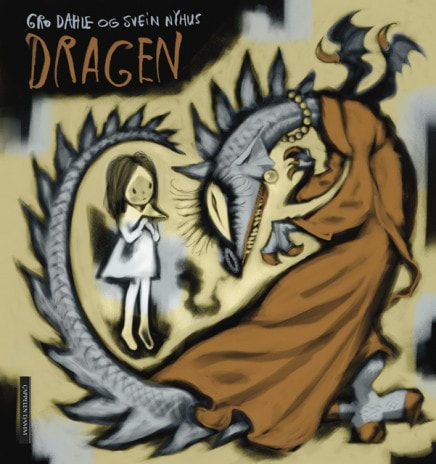BY MEGHAN VALERIO & WILLIAM BINTZRecently, I (William) introduced crossover picturebooks in a graduate literacy course to students pursuing a reading specialization Master’s degree. All students were practicing teachers ranging from elementary through high school. Each week, I read aloud a crossover picturebook to introduce the class session. Selected picturebooks dealt with themes including death and dying, divorce, suicide, mental illness, physical disability, parent-child separation, and other life-changing and impactful events. One example is Dragon by Gro Dahle (2018). It tells the story of Lilli, a young girl who is a child abuse victim by her mother. Lilli regards her mother as a dragon because she is explosive, hot-tempered, and abusive. After reading, I invited students to share their questions and reactions to crossover picturebooks. Three questions and one reaction were particularly illustrative:
These responses inspired this blog post. They revealed teachers may not know much about crossover literature but are curious to know more about it. What are Crossover Picturebooks?Crossover literature, or texts written for dual-aged audiences, is not a new genre, as many books could be considered crossover already. While picturebooks specifically might be enjoyed by both children and adults, crossover picturebooks, a subset of crossover literature, are written and illustrated intentionally for both children and adults, breaking conventional assumptions that books are intended for one age group (Falconer, 2008; Harju, 2009, Rosen, 1997). Crossover authors communicate purposeful messages to both audiences equally (Harju, 2009). Narratives then are considered ageless and timeless, often portraying issues that might be deemed controversial including death, verbal and physical abuse, and divorce. In a world where in-person and online book shopping and borrowing is organized by genre and age, this makes these “ageless” books complex. Consider first an adult purchasing a picturebook for themselves, and on the flip side, encouraging a child to purchase a book about abuse. Both instances could be questionable, even alarming to some. While there are truly designated texts for children, like aesthetic and sensory appealing babybooks (Kümmerling-Meibauer, 2015), crossover picturebooks defy traditional book categorizing norms, causing anyone interested to rethink what counts as children’s literature vs. adult. Children’s literature though is written and published by adults for children (Rosen, 1997). So really, is there such a thing as a true children’s book if the text isn’t written by children at all? What Concerns Does This Raise?Currently, we are conducting research on crossover picturebooks. Specifically, we are exploring teacher concerns on using this literature in the classroom. Based on this research, two major findings indicate that many K-12 teachers worry about the following issues:
These concerns, and many others like them, are real for teachers. Traditionally, children’s literature is to be enjoyable not uncomfortable, entertaining not controversial. Crossover literature invites a different perspective and pushes the envelope on censorship and what constitutes taboo topics in classrooms. To help explore this further, we recommend the following resources. These resources include picturebooks and professional literature that have pushed our thinking about crossover literature. We hope they will push yours.
ReferencesBishop, R.S. (1990). Mirrors, windows, and sliding glass doors. Perspectives: Choosing and Using Books for the Classroom, 6 (3). Falconer, R. (2008). The Crossover Novel: Contemporary Children’s Fiction and Its Adult Readership. London, UK: Routledge. Harju, M.L. (2009). Tove Jansson and the crossover continuum. The Lion and the Unicorn, 33(3), 362-375. Kümmerling-Meibauer, B. (2015). From baby books to picturebooks for adults: European picturebooks to the new millennium. Word & Image, 31 (3), 249-264. Rosen, J. (1997). Breaking the age barrier. Publishers Weekly. 243 (6). Meghan Valerio is a doctoral student in Curriculum and Instruction with a Literacy emphasis at Kent State University. Meghan’s research interests include investigating literacy and cognitive development from a critical literacy perspective, centering curricula to understand reading as a transactional process, and exploring pre- and in-service teacher perspectives in order to enhance literacy instructional practices and experiences. William Bintz is Professor of Literacy Education in the School of Teaching, Learning, and Curriculum Studies at Kent State University. His professional interests include the picturebook as object of study, literature across the curriculum K-12, and collaborative qualitative literacy research. Comments are closed.
|
Authors:
|
CLA
About CLA
|
Journal of Children's Literature
Write for JCL
|
ResourcesCLA-sponsored NCTE Position Statements
|
Members-Only Content
CLA Video Library
|
© COPYRIGHT 2018.
ALL RIGHTS RESERVED |


 RSS Feed
RSS Feed